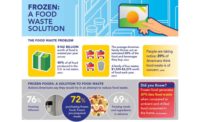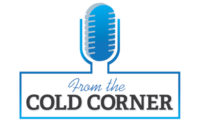Food and beverage manufacturers understand that they must reduce food waste to improve profitability and their environmental impact. Freezing is a simple way to preserve food for long periods of time, particularly as food can be frozen either directly at the source or once it has gone through processing. This flexibility to preserve perishable food at the source is crucial across the globe. For example, in developing countries it is estimated that up to 50 per cent of root crops, fruits and vegetables are wasted due to improper transport and storage.
However, this is not to say that producing frozen food is simple. There are many different and complex processes that must work together to deliver frozen food to the consumer market. For example, freezing, storing and maintaining temperature during transportation all require specialist technology to properly maintain the product and ensure that it is kept safe for consumption.
Freezing methods
Freezing is a well-established food preservation method. However, it is a delicate task. If large ice crystal form within the products cells it can easily destroy the cellular membrane of the product, which can not only alter the thawed products taste but can potentially make it unsafe for consumption.
There are three main freezing methods; air blast, contact and immersion freezing. Each of these methods has a number of additional variants to cater for specific food types or cellular structures, which can affect the ability to freeze and subsequently thaw food correctly.
Air blast freezing works by passing products through below-freezing air flows. Since air blast can freeze products on the move, this method benefits rolling production. Contact freezing is when products are placed between two metal plates with internal cooling systems. This method is three times faster than air blast but is only suitable for products with two flat surfaces, such as prepackaged items.
Immersion freezing requires products to be immersed or sprayed with liquid refrigerant. There are a variety of different refrigerant liquids available, however, the most common are liquid nitrogen or a mixture of ethanol and dry ice.
Regardless of the method, freezer components must be tough to cope with the drastic temperature shifts between their insides and outsides. Furthermore, to keep up with hygiene requirements in the food industry, freezers must be regularly and thoroughly cleaned. This can mean that certain parts, such as paint, can corrode which could contaminate the food products.
Cold supply chains
Cold supply chains are the leading modern method for transporting items that must be kept at a constant cold temperature. In a cold supply chain, every part of storage and transportation is temperature controlled to stop products from decaying. Food products can be very sensitive to temperature fluctuations, with sudden changes often leading to premature spoilage.
In fact, research demonstrates that there are several key variable factors in the food spoilage process: pH, water activity, salt content, gas composition, pressure, humidity and temperature. Of these, temperature is the main instigator, as when a product is stored above its individual temperature limit it can encounter rapid bacteria growth, which accelerates decay.
Modern food supply chains are also long, meaning that keeping produce at a constant temperature is vital. However, due to the rigorous standards that implementing a cold supply chain requires, not everyone is able to use them. This is because the window of temperatures at which products must be kept is very narrow, so any deviation and the produce will be deemed unsafe and rejected. As such, the cold system must be able to be monitored and controlled from start to finish.
Therefore, paper controls and monitoring cannot keep up with the precision needed for cold food supply chains, because they can only register an average temperature. Accurately controlling the temperature inside cold storage requires a smart system, because multiple sensors can record and analyze a constant temperature.
For example, imagine a refrigerated container being kept at minus eight degrees Celsius to store frozen fruit. If one of the cooling systems was to malfunction, a paper-based system would only register a slight anomaly in temperature variation. A smart sensor-based system would be able to identify exactly which cooling system was malfunctioning and directly identify the affected packages as well as alert maintenance and monitoring teams.
Overall, freezing is an extremely flexible method of preventing food waste. It can cater for all types of food and, though intricate, the tools for implementing cold supply chains are prevalent and widely accessible.
As food consumption and the global population continue to grow, food waste must be reduced. One easy method of achieving this is extending the life span of the products on the market. Freezing food is a well-developed technique that can reduce food waste in all parts of the food chain and hopefully, the one billion tons of food wasted every year will be reduced.
About ABB
ABB is a pioneering technology leader in electrification products, robotics and motion, industrial automation and power grids, serving customers in utilities, industry and transport & infrastructure globally. Continuing a history of innovation spanning more than 130 years, ABB today is writing the future of industrial digitalization with two clear value propositions: bringing electricity from any power plant to any plug and automating industries from natural resources to finished products. As title partner of Formula E, the fully electric international FIA motorsport class, ABB is pushing the boundaries of e-mobility to contribute to a sustainable future. ABB operates in more than 100 countries with about 147,000 employees.





